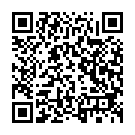|
|
|
| Module code: NE3102.SIP |
|
2V+3P (5 hours per week) |
|
6 |
| Semester: 1 |
| Mandatory course: yes |
Language of instruction:
English |
Assessment:
Oral exam
[updated 12.03.2020]
|
NE2102.SIP (P213-0135) Neural Engineering, Master, ASPO 01.04.2020
, semester 1, mandatory course
NE3102.SIP Neural Engineering, Master, SO 01.10.2025
, semester 1, mandatory course
|
75 class hours (= 56.25 clock hours) over a 15-week period.
The total student study time is 180 hours (equivalent to 6 ECTS credits).
There are therefore 123.75 hours available for class preparation and follow-up work and exam preparation.
|
Recommended prerequisites (modules):
None.
|
Recommended as prerequisite for:
|
Module coordinator:
Prof. Dr. Dr. Daniel Strauß |
Lecturer: Prof. Dr. Dr. Daniel Strauß
[updated 29.11.2024]
|
Learning outcomes:
To develop skills for analyzing and synthesizing algorithms and systems that process discrete time sequences and images, with a particular emphasis on biomedical applications. Topics include time-frequency analysis, filter banks, and hierarchical decompositions. This course covers the theory, practical implementation techniques, and intense hands-on exercises in the lab to sharpen computing and implementation skills. It provides students with the ability to process biomedical signals and images for denoising, registration, segmentation, and feature extraction purposes. Adopting current challenges in medical decision making and decision support system design, the course provides students with a good understanding of the importance of feature extraction in biomedical pattern recognition schemes; a prerequisite for pattern recognition architectures in NE2105 "Neural & Cognitive Systems".
Participation in actual research studies and/or lab projects to complement course topics is required. That way, students receive soft skill training related to safe patient handling.
[updated 18.07.2019]
|
Module content:
1. Time-Frequency Analysis
1.1. Basics of Hilbert Space Theory
1.2. Windowed Fourier Transform
1.3. Continuous Wavelet Transform
1.4. Multiscale-Analysis
1.5. Hardy Space Projections & Analytic Signals
1.6. Generalized Time-Frequency Distributions
2. Multirate Filterbanks
2.1. Basic Operations
2.2. Polyphase Representations
2.3. Two-Channel Filter Banks
2.4. Perfect Reconstruction Filter Banks
2.5. Lattice Structure Implementation
3. Signal Decompositions
3.1. Orthonormal Bases via Paraunitary Filter Banks
3.2. Tree Decompositions of l^2(Z)
3.3. Frames & Oversampled Filter Banks
3.4. Design of Signal-Adapted Filters & Filter Banks
3.5. Adaptive Feature Extraction using Filter Banks
3.6. Implementation Architectures (DSPs, FPGAs, ASICs)
4. Hierarchical Image Processing
4.1. Review: Vector Calculus, PDEs, Finite Difference Method
4.2. Basic Operations & Filters
4.3. Diffusion and Total Variation Filtering
4.4. Multiscale Image Representations
4.5. Optic/Scene Flow Concepts
4.6. Registration, Segmentation, and Denoising
4.7. CPU/GPU/DSP Implementations
[updated 18.07.2019]
|
Teaching methods/Media:
Lecture notes, digital projector, software in the PC lab
[updated 12.03.2020]
|
Recommended or required reading:
Bruce, Eugene N.: Biomedical Signal Processing and Signal Modeling, John Wiley & Sons, 2001
Daubechies, I.: Ten Lectures on Wavelets, SIAM, 1992
Gonzalez, Rafael C.; Woods, Richard E.: Digital Image Processing, Pearson, (akt. Aufl.)
Oppenheim, Alan V., Schafer, Ronald W., Buck, John R.: Discrete-time signal processing, Prentice-Hall, 1999, 2nd Ed.
Parker, J. R.: Algorithms for Image Processing and Computer Vision, Wiley, 2010, 2nd Ed., ISBN 978-0470643853
Preim, Bernhard; Botha, Charl P.: Visual Computing for Medicine, Morgan Kaufmann, 2013, 2rd Ed., ISBN 978-0124158733
Price, Kenneth V.; Storn, Rainer; Lampinen, Jouni A.: Differential Evolution: A Practical Approach to Global Optimization, Springer, 2005
Schölkopf, B.; Smola, A.J.: Learning with Kernels: Support vector Machinces, Regularization, Optimization and Beyond, MIT Press, 2002
Semmlow, John L.: Biosignal and Biomedical Image Processing, Marcel Dekker, 2004
Sonka, Milan; Hlavac, Vaclav; Boyle, Roger: Image Processing, Analysis, and Machine Vision, Cengage Learning, 2014, ISBN 978-1133593690
Suh, Jung W.; Kim, Youngmin: Accelerating MATLAB with GPU Computing: A Primer with Examples, Morgan Kaufmann, 2013, ISBN 978-0124080805
Vetterli, Martin; Kovacevic, Jelena: Wavelets and Subband Coding, Prentice Hall, 1995
Welch, Thaddeus B.; Wrigth, Cameron H.G:, Morrow, Michael G.: Real-Time Digital Signal Processing from MATLAB to C with the TMS320C6x DSPs, CRC Press, 2017, 3rd Ed., ISBN 978-1498781015
Woods, Roger; McAllister, John; Lightbogy, Gaye; Yi, Ying: FPGA-based Implementation of Signal Processing Systems, Wiley, 2017, 2nd Ed., ISBN 978-1119077954
[updated 18.07.2019]
|


